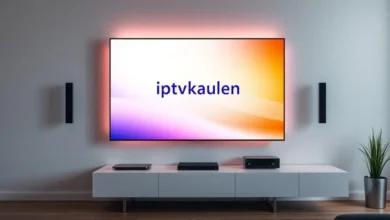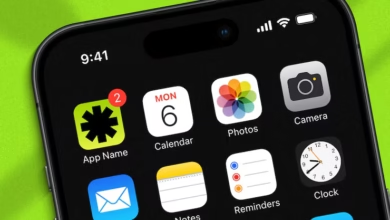
A growing issue in the healthcare sector, hospital readmissions cause overcrowded medical facilities, patient discontent, and higher expenses. Good patient care doesn’t stop at discharge; it calls for ongoing observation to prevent problems and raise general health standards. One essential element in tackling these difficulties has become advanced health monitoring systems. Patient monitoring technologies enable healthcare professionals to remotely track patient status, therefore enabling early treatments and lowering the possibility of rehospitalization.
The Effect on Hospital Readmissions
Hospital readmissions are the phenomenon whereby a patient who has been discharged is admitted once more within a designated period, usually 30 days. Inadequate post-discharge care, complications, poor medication adherence, and lack of patient education can all set off these readmissions. Regular readmissions not only tax healthcare resources but also have detrimental effects on patients that result in unnecessary stress and higher healthcare costs.
Preventive methods are absolutely important for healthcare providers since governments and healthcare regulatory authorities have penalized hospitals with high readmission rates. Modern health monitoring systems offer a creative way to reduce these events while improving the standard of patient treatment.
The function of Advanced Health Monitoring Systems in Minimizing Readmissions
Remote Monitoring Real-Time
Real-time remote monitoring is one of the main advantages of sophisticated health monitoring systems. Patients need continual oversight especially those with chronic illnesses such as heart disease, diabetes, and respiratory problems. Remotely tracking vital signs including heart rate, blood pressure, oxygen levels, and glucose levels, wearable gadgets, and mobile health apps let medical practitioners do Should any anomalies arise, medical experts can act before the matter becomes worse to avoid perhaps a hospital visit.
Improved Compliance and Patient Intervention
One of the main causes of readmissions is non-following post-discharge guidelines. Many patients overlook advised lifestyle adjustments, forget to take their medications, or miss follow-up visits. Automated reminders for medicine, physical exercise, and nutritional requirements provided by advanced health monitoring systems help patients remain on target. These systems also offer instructional tools, therefore enabling patients to control their health and make wise decisions.
Early Conflict Detection
Many post-hospitalization problems start quietly before showing up as major illnesses. A patient recovering from cardiac surgery, for instance, may have minor fluctuations in blood pressure or oxygen saturation levels that, left uncontrolled, could cause major problems. Using ongoing observation, these problems can be identified early on and suitable remedies include prescription changes or quick medical consultations.
Integration of Telemedicine for Right Consultation
Particularly in post-discharge treatment, telemedicine has grown to be a necessary element of contemporary healthcare. Using video calls or safe messaging, patients with health issues can interact with their doctors, therefore saving needless hospital visits. Telemedicine allows real-time contact between patients and healthcare providers when combined with patient monitoring systems, therefore accelerating diagnosis and treatment modification. This strategy reduces the possible difficulties that can cause readmission.
Modern Technologies Applied in Systems of Health Monitoring
Wearable medical tools
Real-time health data gathered by wearable devices such as biosensors, ECG monitors, and smartwatches is sent to healthcare practitioners. These gadgets provide early indications of any possible problems, therefore helping to monitor chronic diseases and post-surgical recovery. Hospitals can approach patient care proactively by always monitoring physiological data.
Artificial Intelligence and Predictive Analytics
Health monitoring systems driven by artificial intelligence examine vast amounts of patient data to forecast possible degradation of health. When machine learning systems identify danger indicators in patient health data, they notify healthcare providers. Predictive analytics also enable customizing of treatment regimens, therefore guaranteeing that every patient receives individualized treatment depending on their health profile.
IoMT for Medical Things
Using seamless data interchange between patients and healthcare providers, the Internet of Medical Things (IoMT) links medical devices Smart equipment including blood pressure cuffs, digital stethoscopes, and glucose monitors can communicate real-time updates to hospital databases, therefore guaranteeing quick treatments. IoMT also supports interoperability, which lets several systems interact and offer a whole picture of a patient’s health.
Difficulties Approaching Advanced Health Monitoring Systems
Although their great advantages exist, the introduction of sophisticated health monitoring systems presents difficulties
Data security and privacy issues
Given the growing reliance on digital health technologies, patient data security is critical. Strong cybersecurity policies are something healthcare companies have to implement if they are to stop illegal access to private medical records.
Harmony with the Current Healthcare System
Many hospitals and clinics run under conventional healthcare models, which makes the integration of sophisticated monitoring systems challenging. To guarantee flawless operation, upgrading the current infrastructure calls for large staff training and major financial commitment.
Patient Acceptance and Technical Competency
Particularly for the elderly, some people could find it difficult to use digital health monitoring gadgets. Ensuring every patient can profit from new technologies depends on education and assistance.
Advanced Health Monitoring’s Future Prospects
Further improvements in patient monitoring systems will define healthcare going forward. Rising technologies such as enhanced AI-driven diagnostics, blockchain for safe health data storage, and 5G connectivity will improve patient care and help lower readmission rates. More hospitals will adopt remote monitoring systems as healthcare gets more digital, therefore enhancing general patient outcomes and lowering healthcare expenses.
Summary
A major focus for healthcare facilities is lowering hospital readmissions; modern health monitoring systems present a workable answer. Hospitals can proactively control patient health and reduce avoidable readmissions by using real-time remote monitoring, predictive analytics, telemedicine, and wearable health devices, Although issues such as data security and system integration still exist, the long-term advantages of these technologies much exceed the difficulties. Healthcare providers have to accept creative monitoring solutions as technology develops if we are to guarantee improved patient outcomes and a more effective healthcare system.




